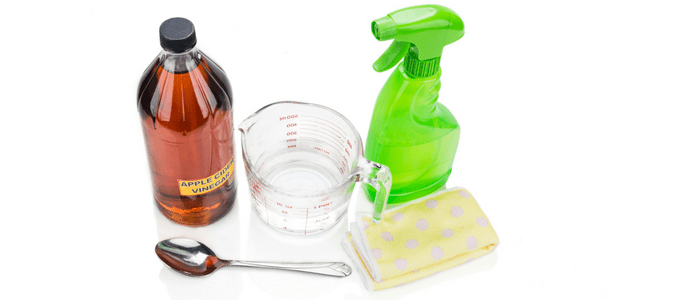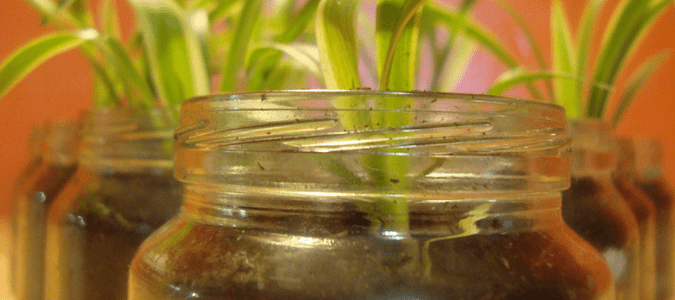
When hearing the word springtail for the first time, some people might be surprised to learn that this is considered a pest. Those who live in dry climates are even less likely to have heard of one before, as these small pests typically inhabit moist environments. If you have heard of these pests, however, you may already know that in the spring and summer months, when the weather is humid and moist, springtails can become quite the nuisance. Despite their incredibly small size—most species that make their way into homes range between one and two millimeters—their presence alone leaves homeowners searching for information on how to get rid of springtails.
Although entomologists and agricultural extension agents agree that springtails do not bite, many people have this misconception. One of the primary reasons that this myth has been perpetuated is that springtails and fleas are often mistaken for one another, and fleas can and do bite humans, as well as other animals. In addition to these insects, which are in the order collembola, contact with chiggers, kissing bugs, spiders, mites, spiders, carpet beetles and other tiny creatures can also result in skin irritation or rashes. So if you suspect you have springtails in your home, it’s understandable to assume these tiny creatures are to blame.
To make matters even more complicated, there are certain environmental factors that can result in itchy rashes that people assume are bug or insect bites. For example, a change in medication cause sometimes cause a rash. Also, prolonged exposure to solvents, such as those used in cosmetology, furniture and paint, can result in itchy skin. Some homeowners may think they have been bitten when they are actually having a reaction to enzyme-based detergents, fabric softeners, soaps, creams, makeup, deodorants and ingredients in other toiletries. Lastly, allergies from mold or mildew growth in dirty air vents can cause skin reactions.
It can be very frustrating to have these mystery “bites” and not know what’s going on. If you find yourself in this situation, and particularly if this is an ongoing problem, the best course of action is to contact your primary health care provider. You can do this in tandem with reading out to a pest control professional, who can help identify any insect pests on your property and formulate a treatment plan.
Learning more about these hexapods’ characteristics, appearance, habitat preferences and preferred diet will help you gather the information you need for next steps. That way, when you’re faced with a possible infestation, you know for certain that the pest you’re dealing with is, in fact, a springtail.
Like we mentioned above, these creatures are incredibly small in size. Still, it’s helpful to note that the creature has an antenna, three pairs of legs and a segmented body. An interesting fact to note, too, is that each springtail can have a different mouthpart. While some can have a simple mouthpart, like a piercing-sucking mouthpart, which the animal uses to suck fungi and liquids, other springtails can have complex mouthparts, though the reasons and uses for such complexities are not yet known. No matter the type of mouthpart seen on a springtail, though, all are located and concealed within its head.
Size, shape and color are also important characteristics used to classify insects and other animals. But similar to the varying mouthparts, springtails come in a variety of colors and shapes, which makes them difficult to identify at times. Most springtails are elongated, while some species are more globular, and their color ranges from white to black to purple to red to orange, grey, yellow and even multicolored.
Perhaps the springtail’s most identifiable characteristic, though, is a furcula, or bi-forked appendage found on the underside of the fourth abdominal segment which is used to evade predators. Folded underneath the springtail, it can launch the creature up to 100 times its body length by snapping downward, sending it flying through the air.
Springtails make their homes in high humidity environments, like under thatch in damp lawns, in mulch or beneath leaf litter. Sometimes springtails are considered swimming pool bugs; types also include water boatmen and backswimmer bugs. When found inside homes, they are most commonly found in bathrooms, under kitchen sinks and in basements. If there are traces of mold within your home’s walls, they can also be found in those locations. As for the food they eat, springtails prefer foods found in similarly moist locations, opting for things such as molds, mildew, fungi, and decaying plant material. As a result, these pests can sometimes cause damage to crops or plants in gardens, fields and greenhouses.
Now that we’ve discussed a bit about the characteristics and habits of this pest, it’s time to evaluate ways to get rid of springtails.

How To Get Rid Of Springtails In Bedrooms
If you notice springtails in your bedroom, bathroom or the carpet in any of your home’s rooms, it’s a good indication that there is an underlying problem you’ll have to address to fully eliminate your springtail population. Because springtails are drawn to moist environments, the root of the problem could be the result of leaky pipes or roofs, poorly sealed tubs and sinks or porous basement walls.
Another potential cause of a springtail problem is the presence of mold or fungus within your walls. Often times, newly built homes can have small amounts of mold, the result of being exposed to rain or high humidity during the framing or construction stages of building the home, especially if it was not allowed to dry completely. While treating the area with spray or insect removal chemicals might solve the problem at first, leaving the source of the springtail’s attraction unsolved will ultimately lead a new group of springtails to form in the same spot several days later. The creatures will continue to nest in your bedroom if signs of moisture and humidity remain.
One of the first things you’ll want to do is vacuum your bedroom to remove any springtails currently there, alive or dead. Then you’ll want to check the ventilation in your home, specifically your bedroom. Improving the air circulation in your home can help improve damp or humid spots indoors. You can also check for any leaks around windows, light fixtures or door frames. If any water or excess moisture is found, be sure to seal or caulk these areas to prevent the future accumulation of water. You can also consider treating such areas with waterproof Delta Dust, which enables homeowners to “blow” the dust inside walls and under cabinets to absorb any moisture that is accumulating.

How To Get Rid Of Springtails In Bathrooms
Similar to your bedroom, springtails are attracted to your bathroom because of excess moisture that typically forms or settles under your bathroom sink, in your shower or in your tub. They can also be attracted to the small amounts of mold or mildew that build up in between tiles in the shower or in the walls behind the shower head.
Before you begin fixing common plumbing problems that might involve a leak that you know might attract springtails to your bathroom, you’ll want to deep clean your the room to remove any mold and mildew buildup. Luckily, a simple mixture of soap and water will do the trick. You can also clean your tub and sink with a bleach cleaner and brush to ensure all the buildup is removed. Under your sink, be sure to tighten any plumbing to avoid leaks.
Once you’ve cleaned your shower or bathtub, consider purchasing a tile sealant to caulk the extra space between tiles and any crevices or cracks that have appeared in your tiles. Doing so will avoid mold buildup and prevent any springtails from gathering in your bathroom.

How To Get Rid Of Springtails Naturally
While many repellents and chemicals could remove springtails from your home, we understand the need and desire you may have for using lower-impact, natural pest control products. One natural remedy that some homeowners use is cider vinegar, due to its high acidity content. Wiping down the infected area with the vinegar will kill the springtails by burning them. Furthermore, cider vinegar is an anti-fungal, which makes it an effective mold treatment, too.
Diatomaceous earth (DE) is also a natural product that can be used to rid your home of springtails. The white powder works by removing the waxy outer coating springtails use to conserve moisture. When used in the correct concentration, neem oil, clove oil, cedar oil, thyme and eucalyptus oil can all be used effectively to kill springtails. Clove oil, however, is most efficient when combined with another essential oil.

How To Get Rid Of Springtails In Soil
Because of the high levels of moisture, springtails often gravitate towards soil—both in your backyard and in potted plants inside your home. If you do have potted plants inside your home, be sure to conduct periodic inspections to ensure a group of springtails hasn’t built up over time. Do so by wiping around the rims of trays, near drains and in damp areas around your plants. Springtails can also enter your home via open windows, doors and cracks in the foundation. As such, you’ll want to keep potted plants and other organic matter, like soil, away from your home’s foundation if possible. If you do suspect that your potted plants are infested, let the soil dry completely before bringing it back into the house.
While the above focuses on what you can do if you already have potted plants in your home, there are steps you can take to ensure springtails don’t enter your home to begin with. Test the soil of a new plant with your thumbs to see if you see any springing, examine lichen or soil covers carefully and be cautious of plants that display signs of excess moisture.
Outdoors, you can discourage springtails from damaging your garden or landscape by removing their ideal habitat, or damp, organic matter. Consider limiting the amount of added compost and other organic material to the soil until the pests are gone. Furthermore, if able, allow your soil to dry out completely before watering your outdoor lawn or garden again.
ABC Can Help Manage Any Infestation
At ABC Home & Commercial Services, we understand that uninvited pests in your home can cause an unwanted headache—especially when you’re dealing with pests you can hardly see, like springtails. While lowering the humidity in your home can help manage and eliminate springtails in your home, sometimes it’s best to call in the professionals. Luckily, our team at ABC Home & Commercial Services is equipped to tackle any size infestation you may have in or around your home. Our skilled technicians can identify the source of your problem and suggest effective, long-term solutions so that you can get back to enjoying your home.
